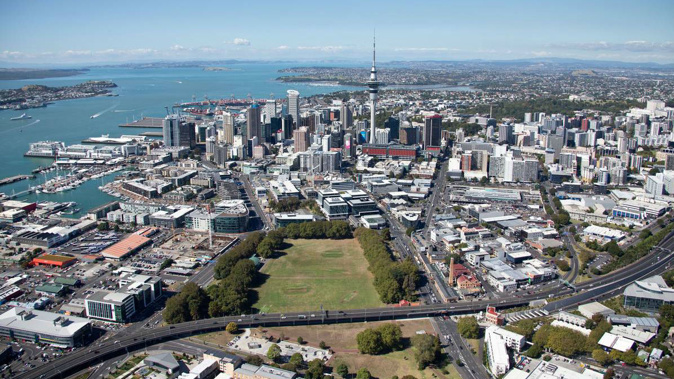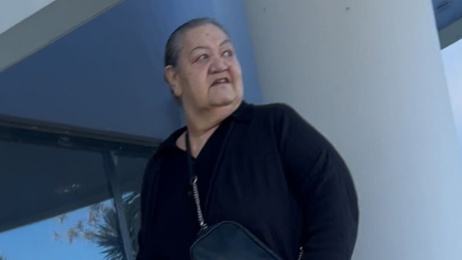
Auckland Transport is expected to sign off a brand-new 10-year budget today, allocating $10 billion in capital expenditure and another $6.5b for running costs. It will mean improved roads all over the city, more public transport – especially buses – and the introduction of "smart systems" to help deal with congestion.
But it's not all good news. The transport plans don't yet align with housing growth. Only half the proposed cycling and walking projects will be approved, and there's very little money for ferries.
The Regional Land Transport Plan (RLTP) is AT's 10-year funding plan. An earlier version was rejected in January because it didn't align with the priorities of council and the new Government. Since then, the Government has produced a formal policy statement on transport, and worked with Auckland Council, including Auckland Transport, to produce a new "Auckland Transport Alignment Project" (ATAP).
That document, adopted in April, sets out the agreed priorities for transport spending over each of the next three decades. AT's new plan says how it will meet its commitments under ATAP. It also notes key spending commitments by the Government, through the NZ Transport Agency and KiwiRail.
As a general rule of thumb, AT pays for local transport and NZTA is responsible for motorways. But there's lots of crossover. Railways are covered by both AT and KiwiRail.
And as an absolute rule of thumb, the officials at AT put in more requests for spending the money than there is money to spend. Then they had to take a whole lot of it out again.
Most of the money is going on roads. Roads are the core of Auckland's transport network and their upkeep and use is central to the city's efficiency.
Lake Rd and Esmonde Rd in Takapuna, for example, will have $47 million spent on them, mostly in 2020. Lincoln Rd in Henderson has $79m allocated to it right now and the work should all be done by 2022.
/arc-anglerfish-syd-prod-nzme.s3.amazonaws.com/public/WPXJQDI2RZGXLHXE4PTVAV4V7A.jpg)
And while the Government wants to downsize the East-West link from Onehunga to Penrose, AT's plan says no to $119m for "local road improvements" to support that project.
Spending on roads isn't just about making the roads bigger or better. "Intelligent transport systems" will be introduced to "manage congestion, improve safety and influence travel demand". That's code for technology that could, for example, charge you for driving to the busiest places. TA has allocated $110m, peaking in 2023, but has not approved another $58m of spending in that area.
Similarly, $180m is allocated to "network performance improvements". Better phasing of the traffic lights, organising freight so the trucks don't bottleneck, that sort of thing. But another $309m worth of proposals were put on hold.
On the Northern Busway, Rosedale and Constellation Drive will get new stations in 2020-2022, as the busway extends to Albany. But while there's $100m allocated for that, another $120m of improvements to the existing busway were turned down.
In east Auckland, construction for the new Eastern Busway will proceed quickly and spending will peak in 2021-23, with $270m allocated to a new Pakuranga station and Reeves Rd flyover. But a proposed spend of $259m on rapid transit from Botany to the airport has been deferred.
New growth areas, especially out west in the Westgate/Massey/Hobsonville area, will receive a major boost during 2024-28, with $570m in new spending.
But it doesn't follow that transport spending will always be well integrated with other growth plans. New facilities in several big growth centres are on hold, including Manukau, Orakei, Albany, New Lynn, Drury, Takapuna and Takanini.
It's the same with transport for Housing NZ projects in Mt Roskill, Mangere and Northcote, all of which have their funding on hold. In these cases, the amounts are not even identified.
Even where the money is allocated, there are gaps. There will be $51m spent on new park-and-rides, but not till 2024. Proposals to spend a further $115m on "enhancing" the park-and-rides were shelved.
Public transport commitments also show up in $370m worth of spending on new electric trains. Big new bus interchanges, costing $36m, will be built during 2019-21 on Quay St and Albert St, as soon as construction work on the City Rail Link and the private Commercial Bay development allows. They're even going to spend $8.6m on electric buses.
/arc-anglerfish-syd-prod-nzme.s3.amazonaws.com/public/Z7PRQP4BYZE3DLKMRJQ5Y7E7BA.jpg) Roads are the core of Auckland's transport network. Photo / Peter Meecham
Roads are the core of Auckland's transport network. Photo / Peter Meecham
And for everyone who's looked at those rows of yellow plastic wands at the side of some suburban roads, there's very good news. The wands are a temporary guide to double-decker buses, to stop them driving too close to shop verandas and other hazards. AT is allocating $14m over the next three years to create a more permanent – and better looking – solution.
Ferries are the loser. AT will spend nearly $50m on the downtown ferry basin over the next five years, but they've nixed the $21m request for a new ferry terminal at Browns Bay, and the $170m on other improvements to ferry terminals, and the $200m on other proposed improvements to the ferry network.
That means the hoped-for upgrades to ferry terminals at Devonport, Bayswater, Gulf Harbour, Northcote Point, Half Moon Bay, Matiatia and Kennedy Point on Waiheke, Pine Harbour and West Harbour are all on hold.
Cyclists and walkers have it better, although the news for them is still mixed. The current urban cycleways programme will be completed by 2021, at a cost of $153m. Around $40m a year is then allocated to new walking and cycling programmes.
But the AT plan does not support a further $396m proposed for active transport. In all, a bit over half what was asked for is being funded.
Safety is a declared priority. AT will spend $120m on rural road safety over the next 10 years, and $8.5m on new red-light cameras at "high risk urban intersections".
There's no money for light rail to the airport or out west. That's because both those projects are fully funded by the Government through NZTA. The combined cost of the two lines is $1.8b, with work starting later this year.
And what many Aucklanders might just view as the biggest transport funding news of all? The Government, not Auckland Transport and the council, will fully fund the walking and cycle route SkyPath, over the harbour bridge, and its companion route SeaPath, which carries on to Esmonde Rd in Takapuna.
They're budgeted at $99m. SeaPath will be built this year and next, with SkyPath following. The whole project will be open by 2021.
The board of Auckland Transport is expected to pass the Regional Land Transport Plan today. It remains subject to final approval of the regional fuel tax and signoff by Auckland Council, both of which are expected later this month.
10 key points in AT's 10-year plan
1. Over 10 years, AT will spend about $10 billion on capital expenditure and $6.5 billion on operating expenditure.
2. The money is widely spread, with most of it going on roads and few projects getting all the money they need.
3. Ferries are the big loser.
4. Almost half the spending requested for cycling and walking has been rejected.
5. New bus interchanges on Quay St and Albert St will just be ready in time for the America's Cup.
6. "Intelligent transport systems" will be introduced to help ease congestion.
7. Growth spending in fast-growing town centres and Housing NZ developments is not yet funded.
8. The problem of double-decker buses hitting shop verandas is getting a permanent fix.
9. Light rail will be paid for by government, not council.
10. SkyPath and SeaPath, taking cyclists and walkers over the harbour bridge and on to Takapuna, will be paid for by government and finished by 2021.
Take your Radio, Podcasts and Music with you









